Fitness Roman Chair: Strength and Stability Training. The Roman chair, a staple in gyms and fitness studios, has gained popularity for its ability to target core muscles, improve balance, and enhance overall strength. This versatile piece of equipment, often overlooked, offers a multitude of exercises that challenge your body in unique ways, pushing you towards your fitness goals.
The Roman chair, named for its resemblance to a Roman throne, is a decline bench with a padded backrest that supports the user’s torso while allowing their legs to dangle freely. This unique design enables a range of exercises that isolate and engage the core muscles, promoting stability and strength.
What is a Roman Chair?
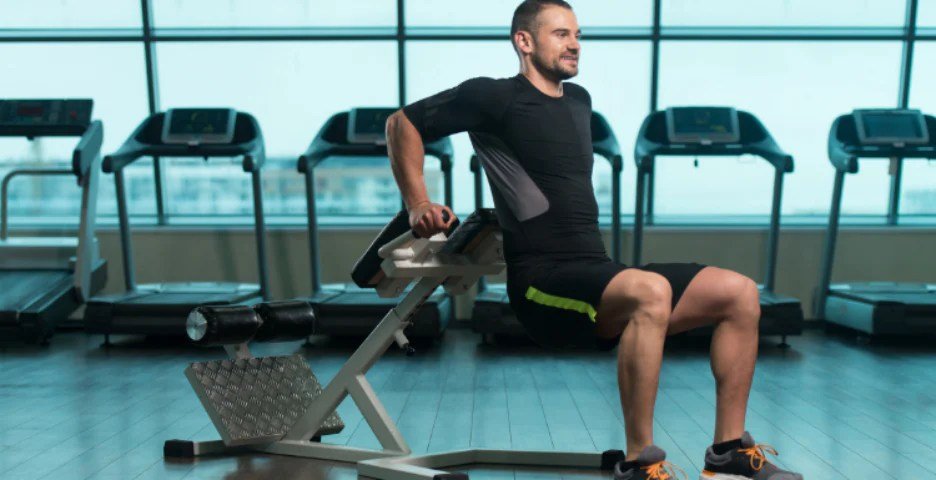
The Roman chair is a piece of gym equipment designed to strengthen and tone the core muscles, particularly the lower back, glutes, and hamstrings. It resembles a chair with a padded backrest and a platform that allows users to perform various exercises, typically involving controlled movements and resistance.
History and Origin
The origins of the Roman chair can be traced back to ancient Roman times, where similar structures were used for physical training and rehabilitation. However, the modern Roman chair, as we know it today, emerged in the early 20th century, gaining popularity in gyms and fitness centers.
Its design has evolved over time, with various modifications and adaptations to suit different exercise needs.
Benefits of Using a Roman Chair
The Roman chair offers several benefits for fitness enthusiasts, including:
- Strengthening the Core Muscles:The Roman chair’s design allows for targeted exercises that engage the core muscles, including the erector spinae, obliques, and transverse abdominis. These muscles are essential for maintaining good posture, stability, and overall body strength.
- Improving Balance and Coordination:Many Roman chair exercises require users to maintain balance and control their movements, which can enhance coordination and proprioception. This can be particularly beneficial for athletes and individuals who engage in activities that demand good balance.
- Targeting Specific Muscle Groups:The Roman chair provides a platform for isolating and working specific muscle groups, such as the lower back, glutes, and hamstrings. This allows for targeted training and muscle hypertrophy.
- Increased Muscle Mass and Strength:Regular Roman chair exercises can stimulate muscle growth and increase overall strength, particularly in the lower body. This can lead to improved athletic performance and functional fitness.
- Improved Flexibility and Range of Motion:Some Roman chair exercises can help improve flexibility and range of motion in the hips and lower back, reducing stiffness and promoting better posture.
Exercises on a Roman Chair

The Roman chair is a versatile piece of equipment that can be used to target a variety of muscle groups, particularly those in the core and lower body. It offers a unique angle and leverage, making it an effective tool for building strength and improving stability.
Roman Chair Exercises
These exercises are designed to engage the core, glutes, hamstrings, and lower back muscles, providing a comprehensive workout for these areas.
-
Roman Chair Leg Raises
The Roman chair leg raise is a fundamental exercise that targets the lower back and hamstrings. It involves lying face down on the Roman chair with your hips resting on the pad, and raising your legs straight up towards the ceiling.
Proper Form:- Lie face down on the Roman chair with your hips resting on the pad. – Keep your back straight and core engaged. – Slowly raise your legs straight up towards the ceiling, pausing at the top. – Lower your legs back down in a controlled manner.
-
Roman Chair Hip Extensions
This exercise focuses on strengthening the glutes and hamstrings. You lie face down on the Roman chair with your hips resting on the pad and extend your legs back towards the ceiling.
The fitness Roman chair is a great tool for building core strength and stability, but it’s important to remember that physical health is intricately linked to mental well-being. If you’re struggling with stress or anxiety, consider exploring resources like mental health awa to find support and guidance.
A balanced approach to fitness, including both physical and mental well-being, can lead to a healthier and happier you, making those Roman chair exercises even more enjoyable.
Proper Form:- Lie face down on the Roman chair with your hips resting on the pad. – Keep your back straight and core engaged. – Slowly extend your legs back towards the ceiling, pausing at the top. – Lower your legs back down in a controlled manner.
-
Roman Chair Knee Raises
This exercise targets the core, particularly the lower abdominal muscles. You lie face down on the Roman chair with your hips resting on the pad and raise your knees towards your chest.
Proper Form:- Lie face down on the Roman chair with your hips resting on the pad. – Keep your back straight and core engaged. – Slowly raise your knees towards your chest, pausing at the top. – Lower your legs back down in a controlled manner.
-
Roman Chair Back Extensions
This exercise focuses on strengthening the lower back muscles. You lie face down on the Roman chair with your hips resting on the pad and extend your torso upwards.
Proper Form:- Lie face down on the Roman chair with your hips resting on the pad. – Keep your back straight and core engaged. – Slowly extend your torso upwards, pausing at the top. – Lower your torso back down in a controlled manner.
Variations of Roman Chair Exercises
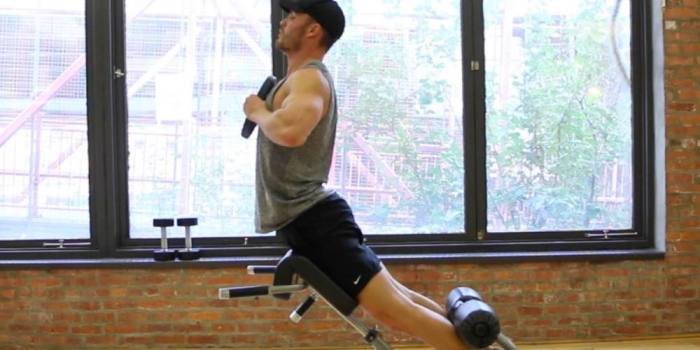
The Roman chair is a versatile piece of equipment that can be used for a variety of exercises. By incorporating variations into your workout routine, you can challenge your muscles in new ways and prevent plateaus.
Variations for Roman Chair Exercises
Here are some examples of variations for common Roman chair exercises:
- Roman Chair Knee Raises:This variation involves bringing your knees up to your chest, instead of your hips. This variation targets the lower abs more effectively.
- Roman Chair Leg Raises with Weight:This variation involves holding a weight in your hands while you raise your legs. This variation increases the difficulty of the exercise and helps to build strength and muscle mass.
- Roman Chair Hip Thrusts:This variation involves pushing your hips up towards the ceiling while your upper body remains on the pad. This variation targets the glutes and hamstrings more effectively.
- Roman Chair Reverse Crunches:This variation involves bringing your knees towards your chest while your upper body remains on the pad. This variation targets the upper abs more effectively.
- Roman Chair Side Planks:This variation involves holding a plank position on your side while your lower body is supported by the Roman chair. This variation targets the obliques more effectively.
How Variations Change the Difficulty and Target Muscles
The variations listed above change the difficulty and target muscles by changing the range of motion, the amount of resistance, and the body position.
For example, the Roman Chair Knee Raises targets the lower abs more effectively because the knees are brought up to the chest, which increases the range of motion of the lower abs. The Roman Chair Leg Raises with Weight increases the difficulty of the exercise because it adds resistance, which challenges the muscles more.
Tips for Incorporating Variations into a Workout Routine
Here are some tips for incorporating variations into your workout routine:
- Start with the basic version of the exercise and then gradually add variations as you get stronger.
- Use a variety of variations to target different muscle groups.
- Listen to your body and adjust the variations accordingly.
- Be sure to use proper form to avoid injury.
Safety Considerations for Roman Chair Exercises
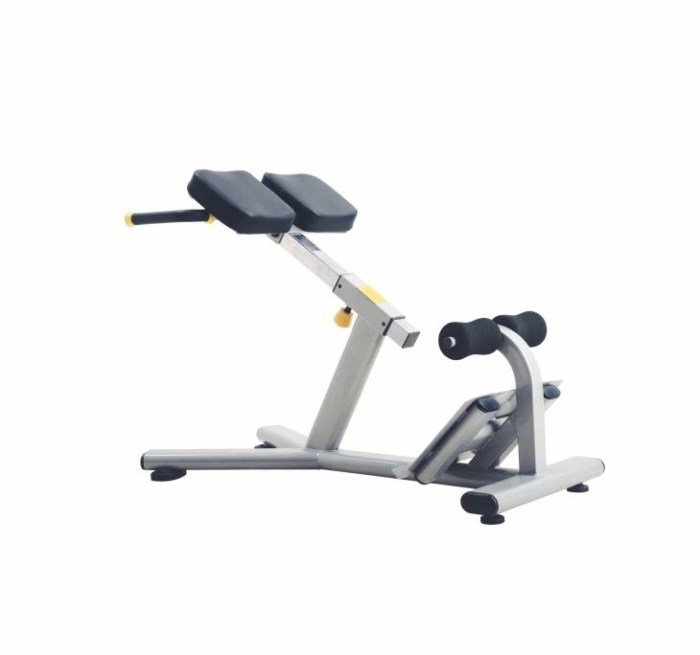
Roman chair exercises, while effective for building lower back strength and definition, can also pose potential risks if not performed correctly. Understanding these risks and taking necessary precautions is crucial to minimize the chance of injury and maximize the benefits of this exercise.
Preventing Injuries
It’s essential to prioritize safety when performing Roman chair exercises. Proper form and technique are key to minimizing the risk of injury.
- Start Slowly:Begin with lighter weights and fewer repetitions to allow your body to adapt to the movements. Gradually increase the weight and repetitions as you gain strength and confidence.
- Control the Movement:Focus on controlled movements throughout the exercise. Avoid jerking or swinging the weight, as this can strain your muscles and joints.
- Proper Form:Maintain a straight back and engaged core throughout the exercise. Avoid arching your back or rounding your shoulders, as this can put excessive strain on your spine.
- Listen to Your Body:Pay attention to any pain or discomfort. If you feel any sharp or shooting pain, stop the exercise immediately.
- Spotter:If you are lifting heavy weights, consider having a spotter present to assist you in case of fatigue or loss of control.
Warm-up and Cool-down
Adequate warm-up and cool-down routines are essential for preparing your body for exercise and promoting recovery.
- Warm-up:Before performing Roman chair exercises, spend 5-10 minutes warming up your muscles with light cardio, such as jogging or jumping jacks, and dynamic stretching, like leg swings and torso twists.
- Cool-down:After completing your workout, engage in 5-10 minutes of static stretching, holding each stretch for 30 seconds. This helps improve flexibility and reduce muscle soreness.
Safety Tips, Fitness roman chair
Here are some additional tips to enhance safety while using a Roman chair:
- Proper Equipment:Ensure the Roman chair is stable and in good condition. Check for any loose parts or damage before use.
- Comfortable Position:Adjust the height and padding of the Roman chair to ensure a comfortable and secure position.
- Clear Space:Ensure ample space around the Roman chair to avoid any collisions or obstacles.
Roman Chair vs. Other Fitness Equipment

The Roman chair is a versatile piece of equipment that can be used for a variety of exercises targeting the core, glutes, and hamstrings. However, it’s not the only option available for these muscle groups. Let’s compare the Roman chair with other popular fitness equipment and see how they stack up.
Comparison with Other Fitness Equipment
Here’s a comparison of the Roman chair with other fitness equipment for similar exercises:
| Equipment | Pros | Cons | Best For |
|---|---|---|---|
| Roman Chair |
|
|
|
| Ab Roller |
|
|
|
| Suspension Trainer |
|
|
|
| Barbell and Dumbbells |
|
|
|
Integrating Roman Chair Exercises into Workouts
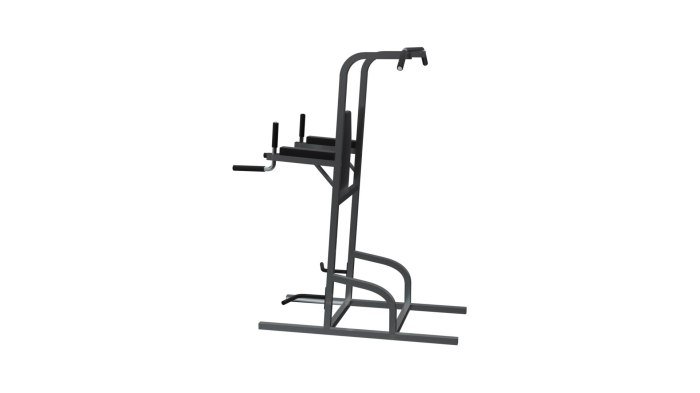
The Roman chair is a versatile piece of equipment that can be incorporated into various workout routines to target different muscle groups. By understanding how to integrate Roman chair exercises into your training program, you can achieve a well-rounded and effective workout.
Sample Workout Routine
Here’s a sample workout routine that incorporates Roman chair exercises:
- Warm-up:5 minutes of light cardio, such as jogging or jumping jacks, followed by dynamic stretching (e.g., arm circles, leg swings).
- Roman Chair Exercises:
- Roman Chair Hip Extension:3 sets of 10-12 repetitions.
- Roman Chair Knee Drive:3 sets of 10-12 repetitions.
- Roman Chair Reverse Hyper Extension:3 sets of 10-12 repetitions.
- Core Exercises:
- Plank:3 sets of 30-60 seconds hold.
- Crunches:3 sets of 15-20 repetitions.
- Russian Twists:3 sets of 15-20 repetitions per side.
- Cool-down:5 minutes of static stretching, holding each stretch for 30 seconds.
Adjusting the Workout
The intensity and volume of the workout can be adjusted based on individual fitness levels and goals.
- Beginner Level:Start with 2 sets of 8-10 repetitions for each exercise. Reduce the weight or resistance if needed.
- Intermediate Level:Perform 3 sets of 10-12 repetitions with moderate weight or resistance.
- Advanced Level:Increase the number of sets to 4-5 and aim for 12-15 repetitions with heavier weight or resistance.
Incorporating Roman Chair Exercises into a Balanced Fitness Program
To achieve optimal results, it’s crucial to incorporate Roman chair exercises into a balanced fitness program that includes cardio, strength training, and flexibility exercises.
- Cardio:Engage in at least 150 minutes of moderate-intensity aerobic activity or 75 minutes of vigorous-intensity aerobic activity per week.
- Strength Training:Include exercises that target all major muscle groups at least twice a week.
- Flexibility:Incorporate stretching exercises into your routine to improve range of motion and prevent injuries.
Roman Chair for Different Fitness Levels

The Roman chair is a versatile piece of equipment that can be used for a variety of exercises, making it suitable for individuals at different fitness levels. By adjusting the difficulty of exercises and incorporating modifications, you can tailor your Roman chair workout to match your current fitness level and progress safely and effectively.
The fitness roman chair is a versatile piece of equipment that can be used for a variety of exercises, targeting your core, glutes, and hamstrings. If you’re looking for a way to enhance your workout routine, a roman chair can be a great addition.
And while you’re focused on fitness, don’t forget to treat yourself to some self-care at rescue beauty lounge. They offer a range of services that will leave you feeling refreshed and revitalized, so you can return to your roman chair workouts with renewed energy.
Beginner Roman Chair Exercises
Beginners should focus on mastering the basic form and building a strong foundation before progressing to more challenging exercises.
- Roman Chair Knee Raises:Start by performing knee raises with your feet flat on the floor. This exercise strengthens the hip flexors and core muscles.
- Roman Chair Reverse Crunches:This variation focuses on the lower abs. Start with your knees bent and slowly bring your hips towards your chest, engaging your core muscles.
- Roman Chair Plank:This exercise strengthens the entire core. Start in a plank position on the Roman chair, maintaining a straight line from your head to your heels.
These exercises should be performed with controlled movements and proper form. It’s essential to focus on quality over quantity, ensuring that you’re engaging the correct muscles and avoiding any strain or discomfort.
Intermediate Roman Chair Exercises
Once you’ve mastered the beginner exercises, you can progress to intermediate variations. These exercises typically involve increased range of motion, resistance, or a combination of both.
The fitness roman chair is a great tool for targeting your core muscles, and if you’re looking for a gym in Dedham that offers this equipment, you should check out Dedham Health and Athletic. This gym has a wide variety of equipment and classes, including those that utilize the roman chair for a challenging and effective workout.
- Roman Chair Leg Raises:Incorporate leg raises with your legs straight for a greater challenge. Focus on maintaining a controlled movement and engaging your core throughout the exercise.
- Roman Chair Weighted Knee Raises:Add weight to your knee raises using a weight plate or dumbbells held across your chest. This increases the resistance and challenges your hip flexors and core.
- Roman Chair Side Plank:This variation targets the obliques. Start in a plank position on the Roman chair and rotate your body to the side, engaging your core muscles.
As you progress to intermediate exercises, it’s crucial to continue focusing on proper form and controlled movements. Listen to your body and avoid pushing yourself beyond your limits.
Advanced Roman Chair Exercises
Advanced exercises on the Roman chair involve increased difficulty and challenge your core strength and stability.
- Roman Chair Decline Leg Raises:This variation increases the range of motion and challenges your hip flexors and core even further. Focus on maintaining a controlled movement and engaging your core throughout the exercise.
- Roman Chair Weighted Leg Raises:Add weight to your leg raises using a weight plate or dumbbells held across your chest. This increases the resistance and challenges your hip flexors and core.
- Roman Chair Anti-Rotation Press:This exercise challenges your core stability and strength. Start in a plank position on the Roman chair and perform a press with a dumbbell, focusing on maintaining a stable core and avoiding any rotation.
Advanced Roman chair exercises require a strong foundation and good technique. It’s essential to progress gradually, focusing on quality over quantity.
Tips for Progressing Through Different Levels
- Start with a lighter weight and gradually increase it as you get stronger.This helps you avoid injury and ensures you’re challenging yourself appropriately.
- Focus on proper form.This is essential for maximizing the effectiveness of your exercises and preventing injury.
- Listen to your body.If you’re experiencing pain or discomfort, stop the exercise and consult with a healthcare professional.
- Increase the number of repetitions or sets as you get stronger.This helps you progress to more challenging exercises.
- Vary your workouts.This helps you avoid plateaus and keeps your workouts interesting.
Roman Chair for Specific Fitness Goals: Fitness Roman Chair
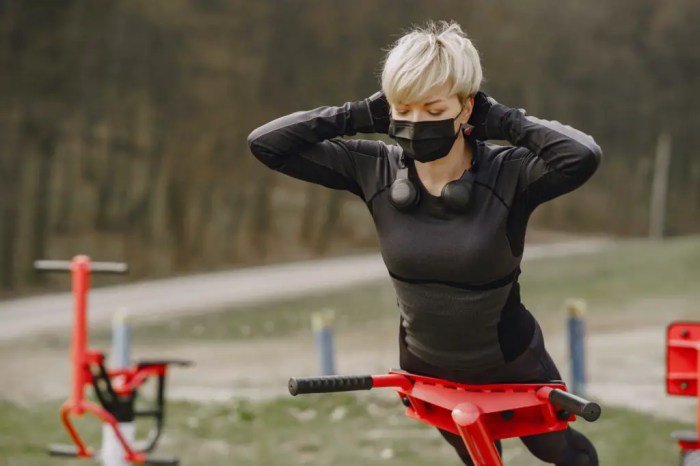
The Roman chair is a versatile piece of equipment that can be used to achieve a variety of fitness goals, from building strength and muscle definition to improving core stability. The key to achieving your fitness goals is choosing the right exercises and performing them with proper technique.
Strength Building
Strength building exercises on the Roman chair primarily target the lower back, glutes, and hamstrings. These exercises often involve holding a challenging position for a set duration or performing controlled movements against resistance. Here are some examples of exercises for strength building on the Roman chair:
- Roman Chair Back Extensions:This classic exercise involves extending the torso from a bent position, engaging the lower back muscles. To increase difficulty, you can add weight plates to your chest or hold dumbbells in your hands.
- Roman Chair Hip Thrusts:This exercise targets the glutes and hamstrings by pushing the hips upwards from a bent position. You can add weight plates to your lap or hold dumbbells to increase resistance.
- Roman Chair Leg Raises:This exercise strengthens the core and hip flexors by lifting the legs from a bent position. You can vary the difficulty by lifting both legs simultaneously or alternating legs.
Muscle Definition
To achieve muscle definition on the Roman chair, focus on exercises that target specific muscle groups and perform them with controlled movements and high repetitions.Here are some examples of exercises for muscle definition on the Roman chair:
- Roman Chair Reverse Crunches:This exercise targets the lower abs by drawing the knees towards the chest while maintaining a bent position. You can increase the intensity by adding weight plates to your ankles or holding a medicine ball.
- Roman Chair Leg Raises with Resistance Band:This exercise targets the hip flexors and lower abs by lifting the legs against resistance from a band. This helps build strength and definition in the lower body.
- Roman Chair Side Plank:This exercise strengthens the obliques and core by holding a side plank position on the Roman chair. This variation helps to target the core from different angles.
Core Stability
Core stability exercises on the Roman chair focus on strengthening the muscles that support the spine and pelvis. These exercises often involve maintaining a neutral spine position while performing movements or holding challenging positions.Here are some examples of exercises for core stability on the Roman chair:
- Roman Chair Plank:This exercise strengthens the core by holding a plank position on the Roman chair. This variation helps to engage the core muscles in a different way than a traditional plank.
- Roman Chair Knee Raises:This exercise strengthens the core and hip flexors by lifting the knees towards the chest while maintaining a bent position. This variation helps to improve stability in the lower body.
- Roman Chair Hollow Body Hold:This exercise strengthens the entire core by holding a hollow body position on the Roman chair. This advanced variation requires significant core strength and control.
Consistency and proper technique are essential for achieving your fitness goals. It is crucial to choose exercises that align with your specific goals and perform them correctly to maximize results and avoid injuries.
Common Mistakes with Roman Chair Exercises

The Roman chair is an effective tool for strengthening your core and glutes, but improper technique can hinder results and even lead to injury. Understanding common mistakes and how to avoid them is crucial for maximizing exercise benefits and staying safe.
Incorrect Positioning
Incorrect positioning on the Roman chair can affect your stability and make it harder to maintain proper form during exercises.
- Sitting too far forward:This can put excessive strain on your lower back and make it difficult to maintain a neutral spine. To avoid this, ensure your hips are fully supported by the pad, and your back is flat against the chair.
- Sitting too far back:This can limit your range of motion and make it difficult to engage your core effectively. The proper position is to sit back far enough to feel a slight stretch in your hamstrings, but not so far that your lower back rounds.
- Not using a spotter:This is especially important for beginners or when performing advanced variations. A spotter can provide assistance and ensure your safety during exercises.
Rushing Through Reps
Rushing through repetitions compromises proper form and reduces exercise effectiveness.
- Using momentum:Using momentum to swing your body up or down instead of controlled muscle contractions reduces the effectiveness of the exercise and can lead to injury. Focus on slow, controlled movements throughout the full range of motion.
- Not engaging your core:Failing to engage your core muscles can result in strain on your lower back and reduced muscle activation. Maintain a tight core throughout the entire exercise to ensure proper form and maximize core engagement.
Overdoing It
Pushing your body too hard can lead to muscle strain and injury.
- Starting with too much weight:Using too much weight can lead to poor form and injury. Start with a weight you can manage comfortably and gradually increase the weight as you get stronger.
- Doing too many repetitions:Overdoing it can lead to muscle fatigue and strain. Listen to your body and stop if you feel any pain or discomfort.
Roman Chair in Different Settings
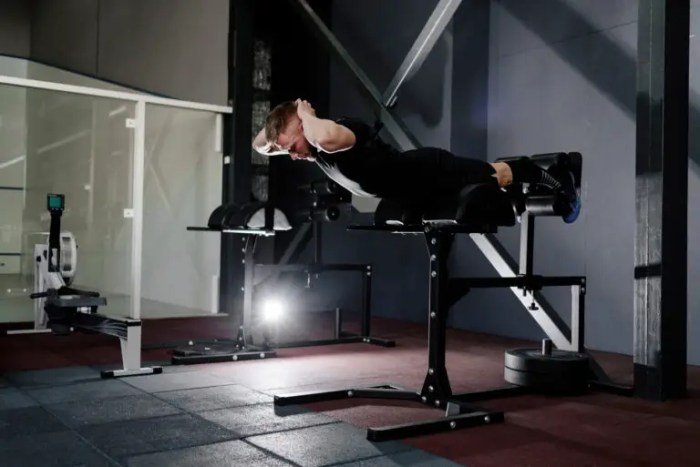
The Roman chair is a versatile piece of equipment that can be incorporated into various fitness settings, each offering unique benefits and considerations. Whether you’re setting up a home gym, utilizing a commercial gym, or seeking physical therapy, understanding the advantages and limitations of the Roman chair in each setting is crucial.
Home Gyms
Having a Roman chair at home offers convenience and cost-effectiveness. It allows for consistent training without relying on gym schedules or memberships. However, choosing the right Roman chair for home use is essential.
- Space Considerations:Measure your available space to ensure the Roman chair fits comfortably. Consider models that fold or have adjustable heights to maximize space efficiency.
- Durability:Opt for a sturdy Roman chair made from high-quality materials to withstand regular use. Look for reinforced frames and stable bases.
- Versatility:Choose a Roman chair with adjustable features, such as incline levels or padded surfaces, to accommodate a variety of exercises.
Commercial Gyms
Commercial gyms typically offer a wider range of Roman chair models, providing greater options for users. They also tend to have more robust and durable equipment designed for heavy use.
- Variety of Models:Commercial gyms often have multiple Roman chairs with varying features, allowing users to choose the best fit for their needs.
- Professional Guidance:Gym staff can provide guidance and spotters for advanced exercises, ensuring safety and proper form.
- Community Atmosphere:Training in a commercial gym can offer a motivating and supportive environment, fostering accountability and progress.
Physical Therapy
Roman chairs are often utilized in physical therapy settings for rehabilitation and strengthening exercises. They provide controlled resistance and stability, aiding in the recovery of lower back, abdominal, and hip injuries.
- Customized Treatment:Physical therapists can tailor Roman chair exercises to address specific needs and limitations, providing personalized rehabilitation programs.
- Controlled Resistance:The Roman chair allows for gradual increases in resistance, promoting gradual strength gains and preventing re-injury.
- Postural Correction:Exercises on the Roman chair can improve posture and core stability, aiding in pain management and injury prevention.
Final Review
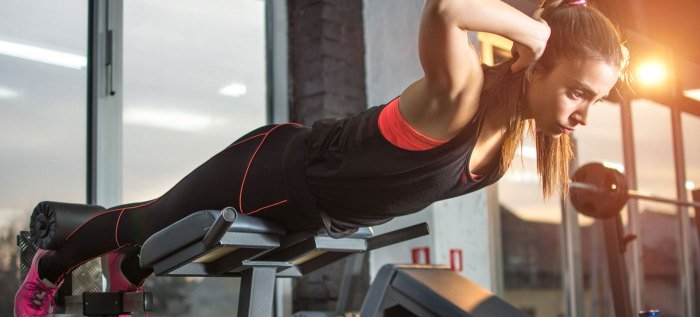
Whether you’re a seasoned athlete or a fitness novice, the Roman chair can be a valuable addition to your workout routine. By incorporating Roman chair exercises into your training regimen, you can enhance your core strength, improve your balance, and unlock a new level of fitness.
So, step onto the Roman chair and experience the transformative power of this versatile piece of equipment.
Question & Answer Hub
How often should I use a Roman chair?
It is recommended to incorporate Roman chair exercises into your workout routine 2-3 times per week, allowing for adequate rest and recovery between sessions.
What are some beginner-friendly Roman chair exercises?
Beginners can start with exercises like knee raises, reverse crunches, and hip extensions. These exercises engage the core muscles without placing excessive strain on the body.
Are there any risks associated with Roman chair exercises?
As with any exercise, there are potential risks associated with Roman chair exercises. It is important to maintain proper form, warm up adequately, and listen to your body to avoid injury.
Can I use a Roman chair for weight loss?
While Roman chair exercises primarily focus on strength and stability, they can contribute to overall calorie expenditure, which may aid in weight loss as part of a balanced diet and exercise program.
Where can I find a Roman chair?
Roman chairs are commonly found in gyms, fitness studios, and some home gyms. You can also purchase a Roman chair online or at sporting goods stores.